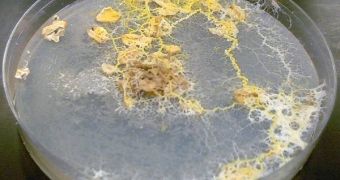Biocomputers are a class of calculation systems that have nothing in common with their silicon- and chip-based counterparts. They are made entirely out of sequences of organic material, such as DNA strands, proteins, or even living bacteria. Their main abilities include storing, retrieving, and processing data, and performing simple calculations. But such a computer, made from the single-celled organism Physarum polycephalum, proves to be a real “powerhouse” of raw animal intelligence, Technology Review informs. Experts are now engaged in efforts of learning how to control it.
Already, Physarum polycephalum has proven its worth to researchers. It showed amazing intelligence skills at navigating mazes, where it always selected the shortest route out. It can also adapt its actions in anticipation to a periodic event, which denotes the fact that it plans ahead. Combined with the fact that it always responds in the same manner to the same stimuli, these traits ensure it a top place in scientists' picks of new material to use in biocomputers. At this point, experts are educating it so that it learns to make simple mathematical calculations.
The organism experiences a lot of changes during its life, but, at one stage, it exists as a single cell called a plasmodium. This cell is extremely efficient at foraging for food. If it discovers a source, it moves all around it, and consumes it by secreting a few enzymes. If it finds more sources, it creates “arms” that stretch out to them and engulfs them all in a digestive network of sorts. If placed in a maze with food in the middle, the arms find the shortest possible way to the food.
According to expert Andrew Adamatzky at the University of the West of England, in Bristol, the UK, plasmodium are the “ideal substrate for future and emerging bio-computing devices.” He reports a new method of guiding, pointing, steering and cleaving the organism solely through the use of light and food such as oat flakes. The scientist says the trick to make plasmodium into forming a computer is actually fairly simple. Create a maze of scattered food and light sources, and then allow the organism to start eating. The shape and size it has at the end will be the result of whatever calculations were made.

 14 DAY TRIAL //
14 DAY TRIAL //